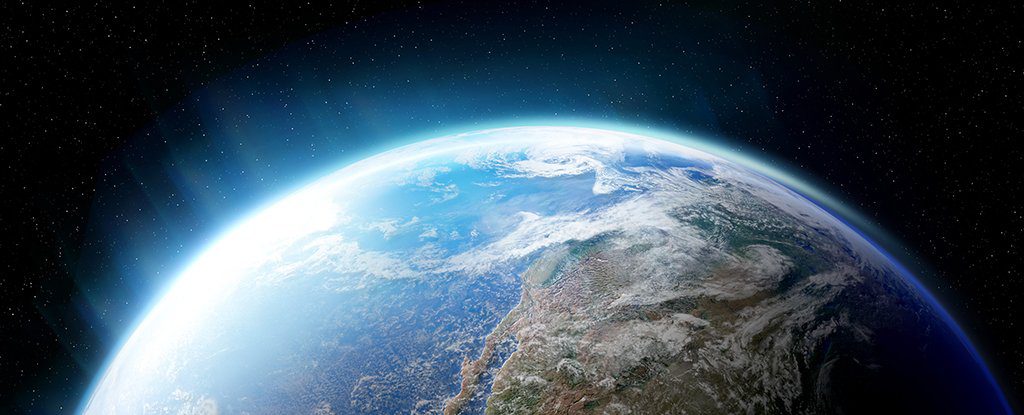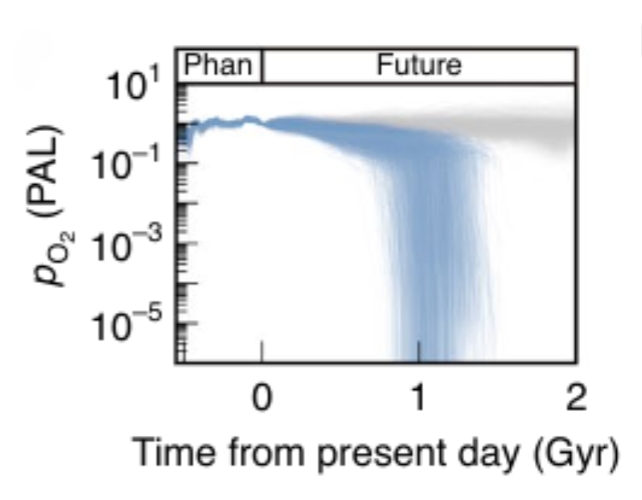
Currently, life is thriving on our oxygen-rich planet, but Earth’s conditions were not always favorable for life as we know it. Scientists forecast that, in the distant future, the atmosphere may shift back to being high in methane and low in oxygen.
This transition is not expected to occur for another billion years, yet research from 2021 suggests that when it does happen, the change will be rapid.
This transformation could resemble the state of the planet prior to the Great Oxidation Event (GOE), which took place roughly 2.4 billion years ago.
According to environmental scientist Kazumi Ozaki from Toho University in Japan, “For many years, the longevity of Earth’s biosphere has been analyzed in light of scientific understanding about the sun’s increasing brightness and the global carbonate-silicate geochemical cycle.” Ozaki highlighted that, “One implication of this theoretical model is a steady decline in atmospheric CO2 levels and geological scale global warming.”
Research indicates that oxygen in the atmosphere is not likely a permanent attribute of habitable planets, raising important considerations for our search for extraterrestrial life.

The researchers explain, “The model predicts a significant drop in atmospheric oxygen, indicating levels that mirror those of the Archaean Earth will likely occur before the development of greenhouse conditions and major water loss from the atmosphere.”
If that occurs, it could spell the end for humans and numerous other life forms that depend on oxygen for survival, highlighting the need for us to devise a plan to leave the planet within the next billion years.

The researchers employed intricate models of Earth’s biosphere while accounting for variations in the Sun’s brightness and corresponding decreases in carbon dioxide levels as heat intensified.
A drop in carbon dioxide concentrations implies fewer photosynthetic organisms like plants, leading to reduced oxygen production.
While scientists have previously projected that escalating solar radiation could evaporate the oceans within about 2 billion years, this study – based on nearly 400,000 simulations – revealed that a significant decline in oxygen could threaten life even sooner.
“The decrease in oxygen levels will be extremely drastic,” said Earth scientist Chris Reinhard from the Georgia Institute of Technology, explaining to New Scientist. “We’re projecting a scenario where oxygen levels could drop to around one-millionth of their current value.”
This research is particularly pertinent amidst our ongoing quest for habitable exoplanets beyond our Solar System.
With advanced telescopes becoming available, scientists are eager to refine what they seek in the vast amounts of data being gathered.
The researchers suggest that, to enhance our chances of detecting extraterrestrial life, we may need to search for biosignatures other than oxygen. Their findings are part of the NASA NExSS (Nexus for Exoplanet System Science) initiative, which explores the habitability of worlds beyond Earth.
According to Ozaki and Reinhard’s analysis, Earth’s oxygen-rich era might only account for about 20-30% of its total lifespan, with microbial life expected to persist long after higher forms of life have vanished.
Ozaki noted, “Following the major reduction of oxygen, the atmosphere will likely be characterized by increased methane, low CO2 levels, and a lack of a functioning ozone layer.”
“The Earth system will probably transition into one dominated by anaerobic organisms.”
This research was published in Nature Geoscience.
A previous version of this article appeared in March 2021.









